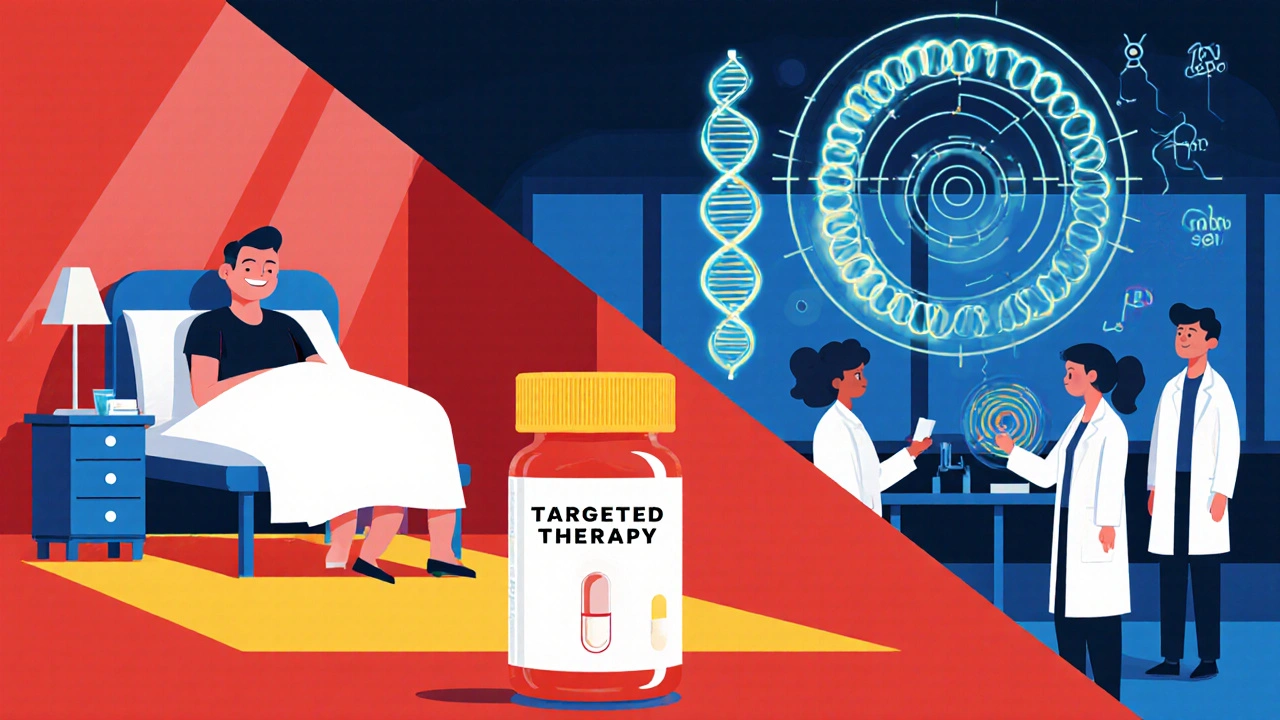Targeted Therapy: What It Is and Why It Matters
When discussing targeted therapy, a treatment strategy that attacks disease‑causing molecules rather than whole cells. Also known as precision therapy, it hinges on identifying the right molecular target. It often uses agents such as monoclonal antibodies, lab‑made proteins that bind specific antigens or kinase inhibitors, small molecules that block enzyme activity driving cell growth. Understanding targeted therapy can transform your approach to treatment.
Key Components of Targeted Therapy
One of the biggest enablers of this approach is precision medicine, the practice of tailoring treatment based on individual genetic and molecular profiles. Precision medicine provides the roadmap that tells clinicians which target to hit, making therapies more effective and side‑effects fewer. In practice, doctors pair a drug with a specific mutation or overexpressed protein, creating a direct link between the disease mechanism and the therapeutic action.
To choose the right drug, clinicians rely on biomarkers, measurable indicators such as gene mutations, protein levels, or cellular pathways. Biomarkers serve as the compass that points to the appropriate targeted agent and help monitor response. When a biomarker is present, a patient is more likely to benefit from a corresponding monoclonal antibody or kinase inhibitor, reducing trial‑and‑error prescribing.
Targeted therapy doesn’t work in a vacuum. It often works hand‑in‑hand with immunotherapy, another modern treatment that boosts the body’s own defenses. While immunotherapy rallies immune cells, targeted agents cut off the growth signals that tumors rely on. Together they create a two‑pronged attack that can overcome resistance mechanisms that would defeat either approach alone.
In cancer care, this synergy shows up in diseases like non‑small cell lung cancer, HER2‑positive breast cancer, and melanoma. For instance, a patient with an EGFR mutation may receive a kinase inhibitor, while a separate checkpoint inhibitor helps the immune system recognize tumor cells. The combination reflects how targeted therapy fits into broader treatment plans, offering options that adapt to each tumor’s biology.
Beyond oncology, targeted therapy is also making strides in autoimmune disorders and rare genetic diseases. By zeroing in on a specific cytokine or enzyme, drugs can modulate the immune response without the blanket suppression seen in traditional steroids. This precision reduces infection risk and improves quality of life for patients with chronic conditions.
Finally, the landscape continues to evolve as new targets are discovered and resistance patterns are mapped. Ongoing clinical trials test novel agents that bind previously “undruggable” proteins, while real‑world data helps refine biomarker panels. Staying current with these advances ensures that patients receive the most up‑to‑date, effective options available.
Below you’ll find a curated set of articles that dive deeper into specific drugs, disease contexts, and practical guidance, giving you actionable insight into how targeted therapy shapes modern medicine today.
How Targeted Therapy is Changing Leukemia Treatment
Explore how targeted therapy transforms leukemia treatment, from key drug classes and real-world success stories to practical patient checklists and future advances.
Read more
